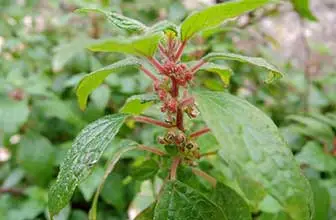Allergies
Plant rot fungus
Allergy to plant rot fungus is caused by the fungus Alternaria alternata, which produces some volatile organic compounds common to many molds. The components of this fungus are very powerful allergens. The abundance of spores in outdoor air and their presence in moldy homes make this fungus one of the most important sources of fungal allergens. It is not one of the most frequent allergies, it only affects approximately 10% of allergy sufferers, but it is one of the most aggressive.
The Alternaria alternata is present worldwide and at any time of the year. In summer, the incidence of this type of allergy usually increases, although it depends on climatic factors such as heat, the amount of rain and drought. It increases in times of cereal harvest, since there are high rates of this fungus in the cane. In addition, this type of fungus can also be found indoors, mainly in humid areas. The most common symptoms are rhinitis, asthma and sinusitis. In some cases, it can cause life-threatening asthmatic episodes. It is an impossible-to-control allergy, therefore, as a prevention, it is advisable to remove any dead leaves around, avoid contact with grass, dense vegetation, the accumulation of organic debris near the house, staying in damp rooms, houseplants, dried ornamental flowers, shady and damp areas, exposure to house dust, slippery bathtub mats, eating and/or storing moldy food, storage of wet clothes and shoes indoors and humidifiers. The humid areas of the house must be ventilated, using anti-mould paints. Refrigerators and air conditioners can accumulate mold, so it is recommended to clean them frequently.
Alérgeno recombinante para IVD
TYPE
Especie
ALÉRGENOS RECOMBINANTES
Name, references, and description
Tipo de reactivo
- Alérgenos/Antigenos
- Bloqueadores
- Anticuerpos
Características Reactivos
- Humana
- Animal
- Allergies
-
Alternaria alternata
-
- Alt a 1
- RAL0025
- Unknown
-
Brochures
Videos
Especialistas en alérgenos recombinantes para tests de anticuerpos de alérgenos
We ensure a commitment to absolute confidentiality regarding all information received and generated related to your project.
-
[[carrito.product.name]]
- [[sku.sku]]
Or if you prefer...
We will analyze your request to prepare a quote tailored to your needs.
-
[[carrito.product.name]]
- [[sku.sku]]
As manufacturers, we can adapt our products to your needs.
Contact us!







